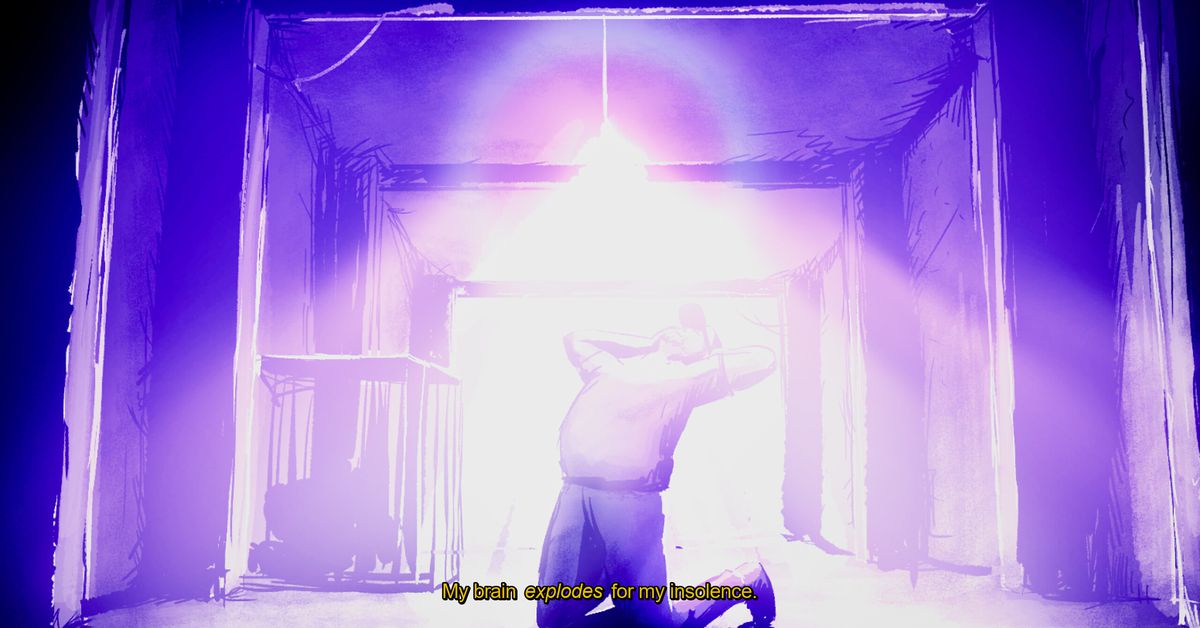Most games’ protagonists are heroes, gunning down bad guys or trying to save the princess. You could argue the protagonist of Life Eater is kind of like a hero. Sure, he stalks people relentlessly before murdering them in the service of a dark god. But if he didn’t do that, the world would end. So really, when you think about it, this is a noble mission — and by enacting Zimforth’s will, I’m saving the world.
Life Eater is a weird little game that is unlike anything I’ve ever played before. When I first played it upon its release in April, I noticed the striking visuals and audio effects, and the short cutscenes between campaign chapters sent chills down my spine, but I found the actual meat and potatoes of the game to be fairly minimal.
Here’s how it works: I get presented with targets, each of whom has their own schedule. Each victim’s personal timetable starts out blank; I have to uncover the details of my victim’s life by poking and prodding at them. For instance, I can discover that my target has breakfast at around 9 a.m. by leisurely rattling their doorknob and then scampering away. Hacking into their computer gives me a hint as to their weekend habits, and hiding in the bushes is a good way to learn whether they commute or not. It’s only when I truly understand the victim and their schedule that I can strike, sacrificing them in the dark to buy our world another year of peace.
:no_upscale()/cdn.vox-cdn.com/uploads/chorus_asset/file/25470974/ss_80e69ef90d3fd7590200456c0c0770b289849017.jpg)
Image: Strange Scaffold/Frosty Pop
At first, I bounced off Life Eater hard. The ending ritual to sacrifice the victim would always be the same — remove this organ if they have a commute, and break this rib if they slept a certain number of hours per day. It took a lot of the joy out of poring over a victim’s life, because I always knew the exact facts I needed to gather, so I had little curiosity to do anything else. The campaign also introduces multiple targets early on, but some of them are innocent and must not be touched. I had a hard time ascertaining which person was the “right” sacrifice, and eventually I grew frustrated with the game and put it down, thinking it was ambitious and admirable but not for me.
A recent update from developer Strange Scaffold has changed things. The ending sacrifice is now much more varied, and now I want to go into the ritual with as much information as I can possibly glean. Furthermore, a new Endless Mode has been added to the game, and I found this to be a good way to practice my stalking skills. After a few rounds of Endless Mode, I felt like I could tackle the campaign, and the narrative weight of the story finally got its claws into me.
:no_upscale()/cdn.vox-cdn.com/uploads/chorus_asset/file/25470975/ss_f018cd5199c8e6419e18a2d0a8b2a6fcdd7daf97.jpg)
Image: Strange Scaffold/Frosty Pop
The trick to Life Eater is that every action takes time, which is a finite resource, of course. Furthermore, a failed action raises suspicion — if I try to break into someone’s house and they catch me, I’m at risk of being discovered and possibly stopped by the police. I can ease suspicion by doing any number of non-stalker actions, like going to work, sleeping, or socializing… but that burns into my time, and if the clock hits zero without me performing the necessary sacrifice(s), the world ends.
The minimal style of the game pays dividends here, because each one of the procedurally generated victims can end up being relatively complex. The game never straight up tells you if someone lives alone — but I can review the information I’ve uncovered and see the blocks of time where the victim is alone and figure out whether they have company at any given hour of the day. And sometimes I find some truly grisly secrets, like a Saturday ritual where my target goes to the woods to drink blood with their buddies. It’s a game that actually makes me feel like a stalker, which is a truly novel horror experience.

